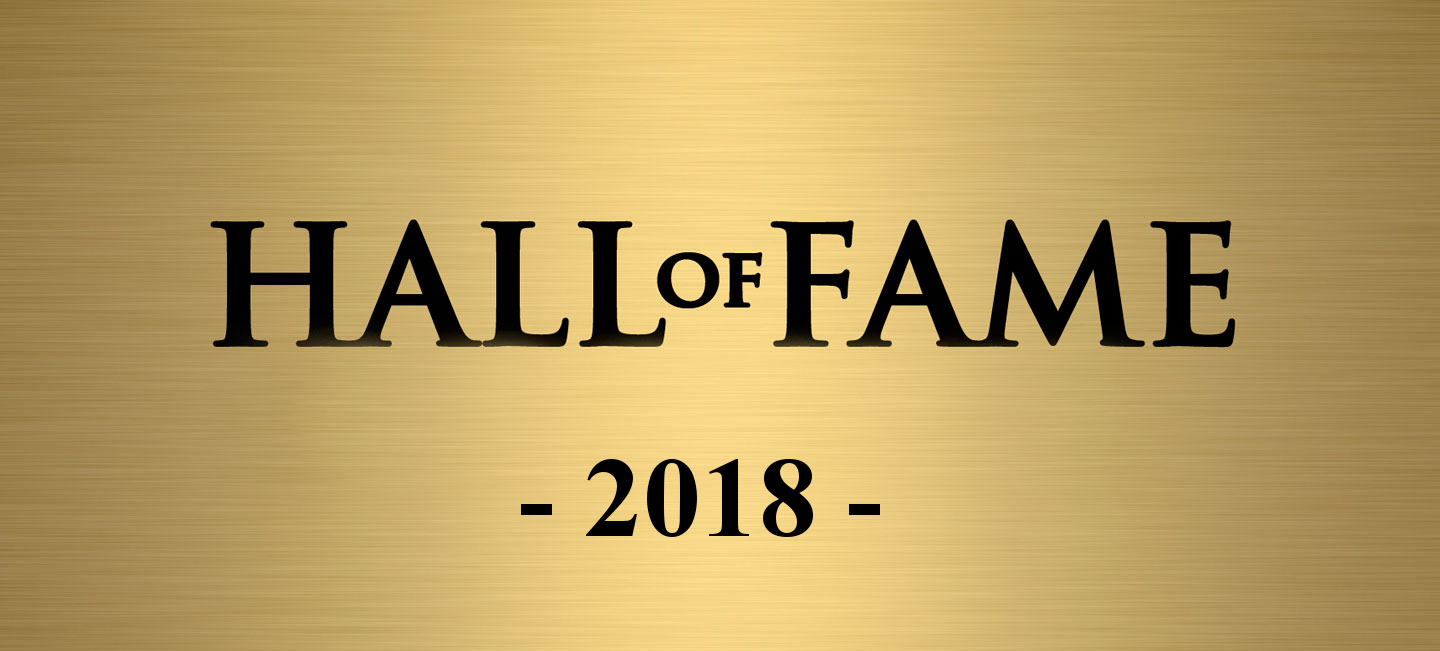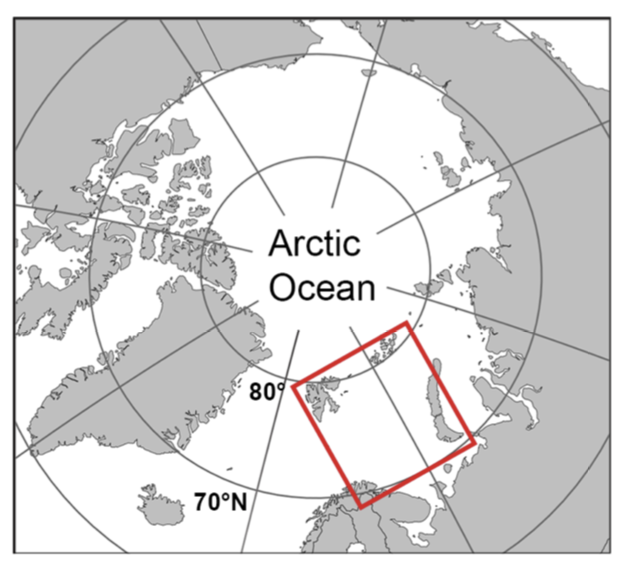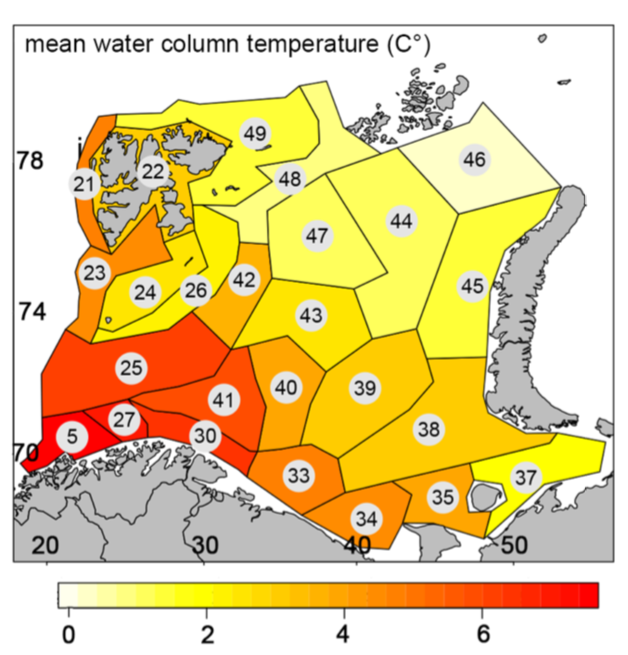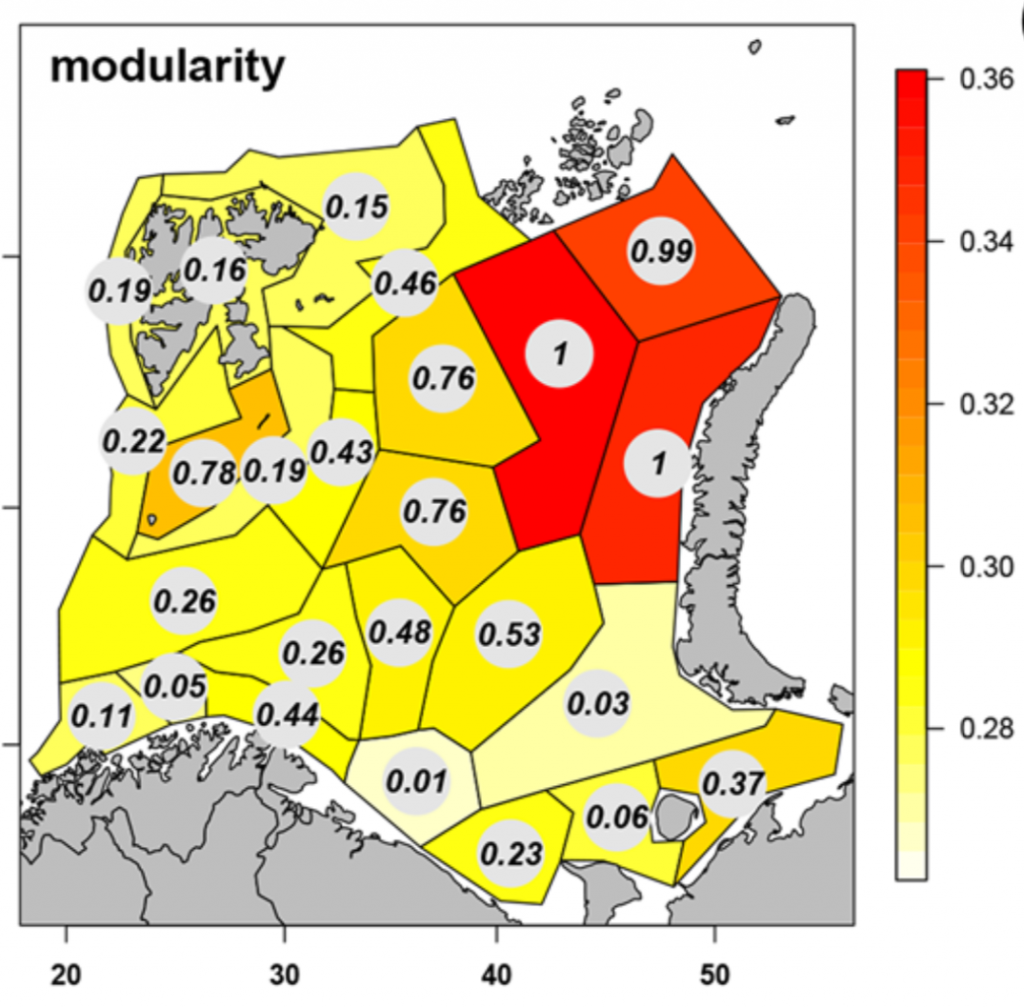As we launch into another year of research, we thought it would be interesting to look back on some of the work that came out in 2018, so we asked the School of Natural Sciences what papers they would like to induct into our second annual Hall of Fame. Read on for the papers we thought were fascinating, notable, or just cool. When you’re finished, you can check out 2017’s Hall of Fame here.
—————————-
Demandt N, Saus B, Kurvers RHJM, Krause J, Kurtz J, and Scharsack JP. (2018). Parasite-infected sticklebacks increase the risk-taking behaviour of uninfected group members. Proc. R. Soc. B 285 : 20180956.
Chosen by Maureen Williams
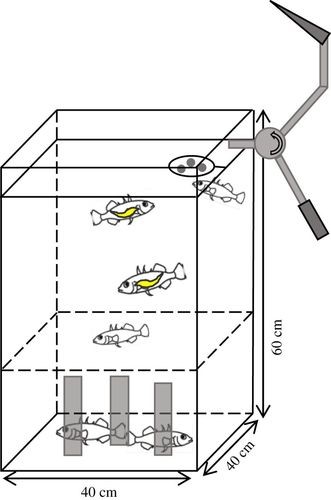
Using a stickleback fish-tapeworm model system, the authors show how parasites that change the behaviour of their hosts are actually able to alter the behaviour of non-infected individuals. Generally, the tapeworm drives the fish towards predatory birds to increase the lifespan of the parasite, who needs to live in birds to reproduce. It’s well known that infected fish are thus more likely to take risks which could result in their being eaten by birds. This paper shows uninfected fish living in groups with infected fish are more likely to risk their own death, as well. As these fish live in groups, they learn from each other and fine-tune their behaviour to those of their group. By using a very nifty experimental set up, the authors provide the first evidence of a very interesting phenomenon with consequences for behavioural science, parasitology, and overall ecology.
Read the full paper here.
—————————-
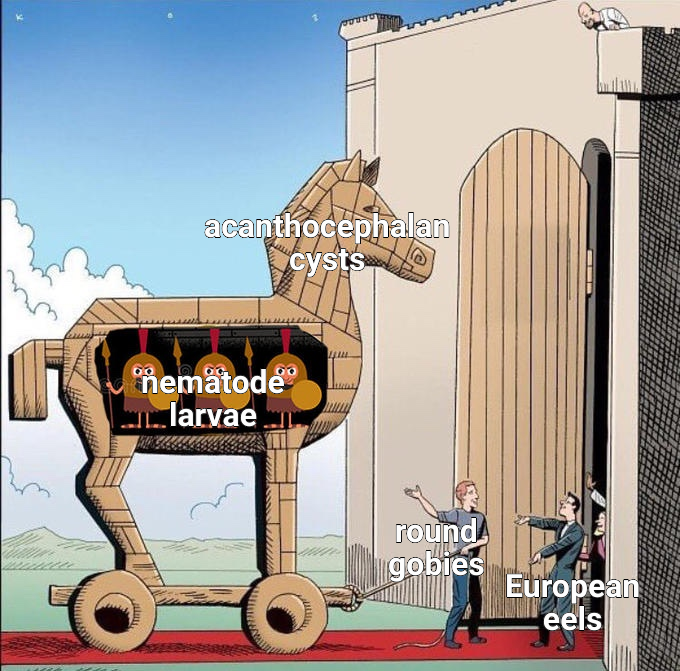
Hohenadler MAA, Honka KI, Emde S, Klimpel S, and Sures B. (2018). First evidence for a possible invasional meltdown among invasive fish parasites. Scientific Reports, 8: 15085
Chosen by Paula Tierney
This paper follows previous research from this research group that found larvae of the eel swim bladder nematode Anguillicola crassus infected cysts of another parasite, acanthocephalan Pomphorhynchus laevis, in round gobies (Emde et al., 2014). I love telling students about that paper (“Parasites are so ubiquitous, even parasites get parasites!”) so I was excited to see further work on it. Round goby is a super successful Ponto-Caspian invader of European freshwaters, often bringing P. laevis with them. A. crassus is also an invasive parasite; it’s native to Japan but since arriving in Europe, it has infected European eel and contributed to their population decline. In this paper, the authors simulated European eels preying on invasive round goby by experimentally infecting eels with P. laevis cysts harvested from gobies from the Rhine. They found that the eels become infected with A. crassus but not P. laevis, showing that the nematodes inside the cysts remain infective to their eel final host even after passing through acanthocephalan cysts and goby host. What is really cool about this system is that, since gobies don’t have swim bladders, we would never ordinarily have imagined that A. crassus could use round goby as paratenic hosts. By hitchhiking on P. laevis, A. crassus may avoid a goby immune response and sneak ‘Trojan horse’-style into their preferred eel host. Since the prior presence of invasive P. laevis facilitates the dispersal of A. crassus, this work constitutes the first example of invasional meltdown among invasive parasites.
Read the full paper here.
—————————-

Yang F, Choi YJ, Antonia Misch A, Xin Yang X, and Dunham Y. (2018). In Defense of the Commons: Young Children Negatively Evaluate and Sanction Free Riders.Psychological Science 29 (10)
Chosen by Cian White
Not an ecological article, but still my favourite of the year. The question being tested was whether children, with very little socialisation (therefore controlling for nurture), would punish free riders in a system, thereby increasing the common good (and not punishing just for selfish reasons). They found very strong evidence for this cooperative enforcement, and the degree to which the children would punish freeriders, or to put it plainly tell on cheats, actually slightly decreased with age, i.e. with socialisation. Which is all to say that cooperation in humans has a very strong genetic component. It also is hopeful considering that many of the most serious problems we face are “tragedy of the commons” situations, like climate change, and this hints that if we can set up the right institutions we are genetically predisposed to work cooperatively.
Read the full paper here
—————————-
Manning P, van der Plas F, Soliveres S, Allan E, Maestre FT, Mace G, Whittingham MJ, and Fischer M (2018). Redefining Ecosystem Multifunctionality. Nature Ecology & Evolution 2.
Also chosen by Cian White
My favourite ecological paper. Great perspective piece that redefines multifunctionality from an ecosystem functioning perspective and an ecosystem service provision perspective. I had been waiting for a paper like to this come out, to really clarify the difference between the types of multifunctionality, and it didn’t disappoint. Very clearly argued all the way through, and really clarifies the concepts for more applied and fundamental research to be build upon. As I’m currently writing a perspective piece myself, this has been an inspiration.
Read the full paper here
—————————-
Kortsch S, Primicerio R, Aschan M, Lind S, Dolgov AV, and Planque B (2018). Food-web structure varies along environmental gradients in a high-latitude marine ecosystem. Ecography 41.
Chosen by James Orr
This group constructed food webs for 25 different regions in the Barents Sea, which is a section of the Arctic Ocean just north of Norway and Russia. In the Barents Sea there are a number of really nice natural environmental gradients like water temperature and bottom depth. Kortsch and the gang looked at how food web metrics like connectance and modularity changed over these natural environmental gradients and they described some interesting trends. They also made some fab figures!
—————————-
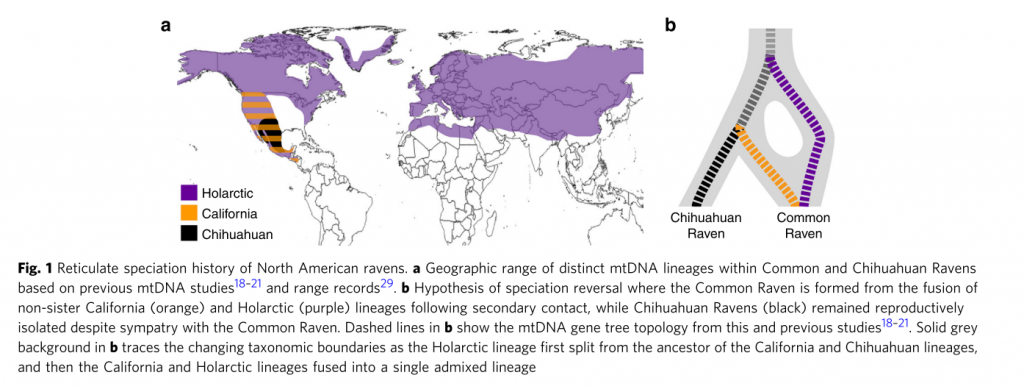
Kearns AM, Restani M, Szabo I, Schrøder-Nielsen A, Kim JA, Richardson HM, Marzluff JM, Fleischer RC, Johnsen A, and Omland KE. (2018). Genomic evidence of Speciation Reversal in Ravens.Nature Communications 9(1):906
Chosen by Fionn Ó Marcaigh
This paper gives a really interesting look at an example of reticulate (“net-like”) evolution, where ravens diverged into three lineages, two of which later fused to form the current Common Raven. Ever since Darwin, the classic metaphor for speciation has been a tree, with new species branching off from a common ancestor. In this paper, the authors describe how evolution can work more like a net, with evidence from mitochondrial DNA and nuclear genomes. It’s not the first example of speciation reversal, but in other examples the species were not separated for as long or spread over such a wide geographical area.
Figure 1 from the paper shows the distribution of the three lineages in the Northern Hemisphere (the Holarctic), and their inferred history. The Holarctic and California lineages are “non-sister” lineages: they did not diverge directly from each other, but rather the Holarctic lineage diverged from an earlier common ancestor. And yet despite this deep level of divergence, through hybridisation they formed one species, while the Chihuahan lineage remained distinct.
I find it interesting that there should be such divergence in the southwest corner of the ravens’ range, while the rest of the Holarctic is shown with one lineage. I wonder if raven evolution across the rest of the range will be shown to be much more complex than we presently understand. What does this suggest about other widespread species?
Read the full paper here.
Do you have a favourite paper from the last year? Let us know in the comments, or on Twitter!

